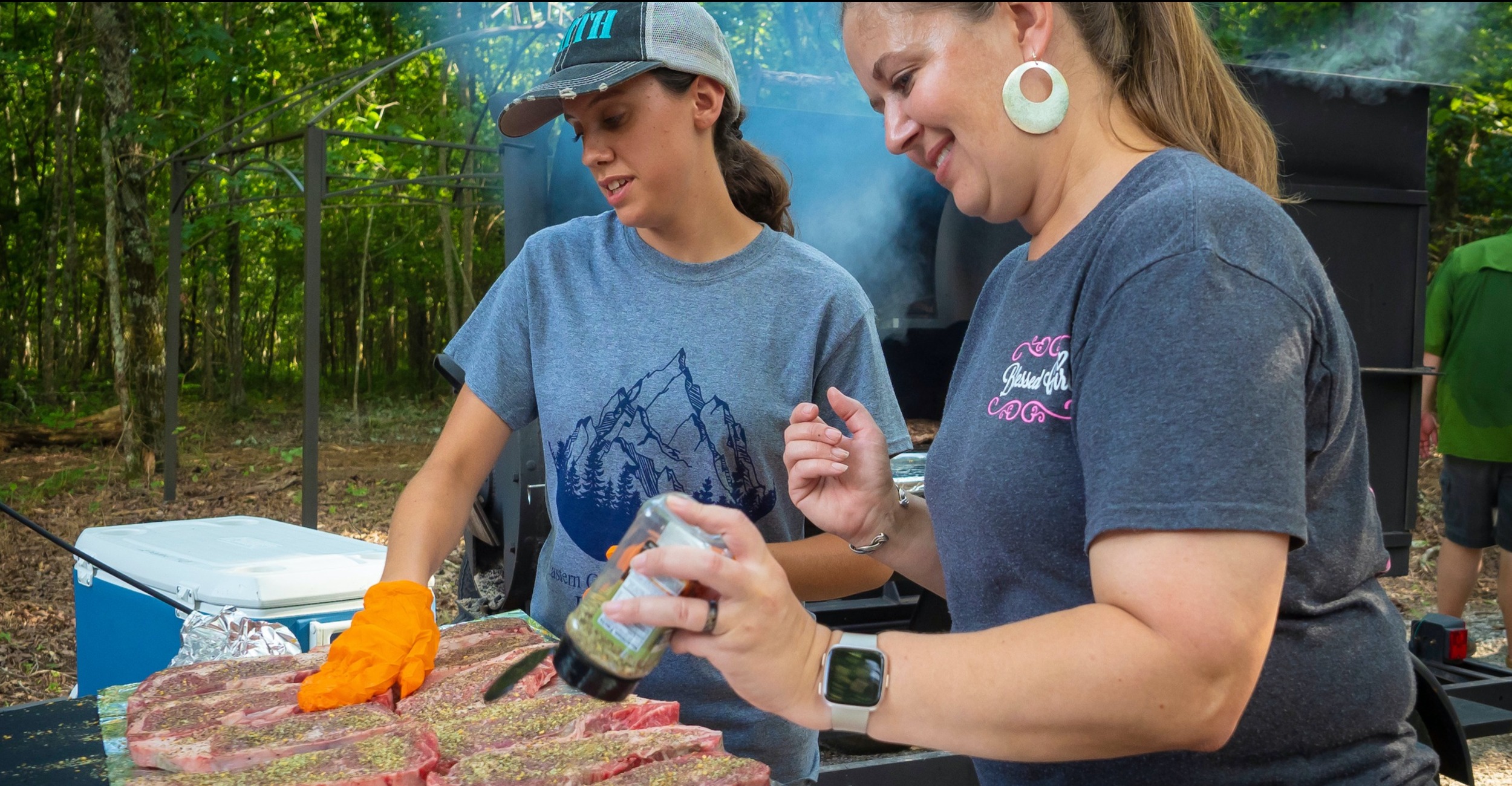
Practice food safety to enjoy outdoor, summer cuisine
Friday, July 16, 2021
Media Contact: Gail Ellis | Communications Specialist, Copywriter | 620-515-2498 | gail.ellis@okstate.edu
July is National Grilling Month, and outdoor events are in full swing. As people step outside to cook those favorite summer dishes, smart food safety habits are critical to their health.
“Food safety isn’t just for food manufacturing plants. It’s important for consumers to be mindful of food safety in the home and wherever they prepare meals,” said Ravi Jadeja, a food safety specialist with the Robert M. Kerr Food and Agricultural Products Center at Oklahoma State University.
Information provided by the U.S. Department of Agriculture explains why foodborne illness often peaks during the warmest months of the year; hot and humid weather is conducive to the growth of harmful bacteria.
Preventing foodborne illness begins with safe food handling and preparation practices. Jadeja recommends the following tips for both indoor and outdoor cooking.
- Completely thaw meat or poultry in the refrigerator to ensure it cooks evenly.
- Never thaw meat on a countertop or in a sink — only use the refrigerator. Thawing at room temperature increases the risk of bacterial growth on the surface of the meat, even though the interior may still be chilled.
- Marinate meat in the refrigerator rather than on the counter where bacteria can multiply.
- Discard leftover marinade and do not use it on cooked food as a dressing or dipping sauce. Leftover marinade can contain bacteria that make it unsafe for consumption.
- Wash hands thoroughly before and after preparing any food product.
Once food is placed on the grill, Jadeja advises using a food thermometer to ensure meat is thoroughly cooked to a safe temperature. For safe consumption, meat must be cooked to the following temperatures:
- Beef, pork, lamb and veal: 145 F (allow three minutes to rest before consuming)
- Ground meats: 160 F
- Chicken: 165 F
Food must also remain chilled before cooking. For picnics, cookouts and barbecues where a refrigerator is not available, coolers are the best option. Jadeja’s advice for using coolers to store meat and other food items:
- Use an insulated cooler filled with ice, frozen gel packs or other frozen food to serve as a cold source
- A full cooler can maintain its chilled temperature longer than a partially filled one
- Avoid placing a cooler in the direct sunlight
- Avoid repeatedly opening the cooler to keep food colder for a longer amount of time
- Certain foods must always be stored cold, such as raw meat, poultry, seafood, deli and luncheon meats, sandwiches, summer salads, fruits and vegetables that have been peeled and cut and perishable dairy products
- Food items, including cooked hamburgers or hotdogs, condiments and cheese slices, should be covered or wrapped in plastic for protection from flies and germs
After cooking juicy steaks or tasty kabobs on the grill, the leftovers can be enjoyed if properly stored. Keep in mind the following guidelines:
- Store leftovers in the refrigerator within two hours after cooking.
- Divide the remaining food into smaller portions and store in shallow, airtight containers.
- Leftovers should be eaten within three to four days.
- Consider freezing large amounts of leftovers for later use. Freeze immediately and eat within six months.
- Reheat leftovers to 165 F, and do not consume leftovers that look or smell questionable.
After the leftovers are packed away, don’t forget to clean your grill. Routine cleaning and maintenance can prolong the life of your charcoal, gas, pellet or flat-top grill. Step-by-step instructions for each grill type are available online.
See the OSU Extension fact sheet on food safety and enjoy the summer with these grilling recipes from OSU Extension.
Mighty Burgers
1 pound ground beef
1 egg or egg substitute
1/2 Tbsp. diced parsley
1/2 Tbsp. diced parsley
1/2 cup cracker or bread crumbs
1/2 cup milk
1 tsp. dry mustard
1 tsp. garlic powder
1/4 tsp. black pepper
1 Tbsp. chopped onion (optional)
- Mix ingredients together in a large bowl.
- Shape into six patties spread to 1/2-inch thickness.
- Grill over medium-hot coals until the center of the meat reaches 160 F.
- Serve on whole-wheat hamburger buns, split and toasted.
Grilled Chicken Kabobs
4 skinless, boneless chicken breasts cut into 1-inch pieces
1 cup teriyaki sauce/marinade
1 tsp. paprika (optional)
1 carton (about 2 cups) cherry tomatoes
1 tsp. garlic powder (optional)
1 green bell pepper, cut into small squares
1 16-oz can pineapple chunks
- Mix teriyaki sauce or marinade with spices as desired. Set aside a small amount of marinade for basting later. Place the chicken pieces in the marinade in a glass dish and refrigerate for 30 minutes to two hours. Drain chicken and dispose of the marinade.
- Place chicken, vegetables and pineapple on long wooden or metal skewers. Alternate chicken with vegetables and pineapple. Leave a space between each piece of chicken and the vegetables or pineapple to allow even cooking.
- Place skewers on grill rack, close grill lid and grill over hot coals.
Grilled Apples
3 apples, peeled, pared and sliced
1/4 cup margarine, melted
1 Tbsp. lemon juice
1/2 tsp. ground cinnamon
2 Tbsp. brown sugar
- In a small bowl, mix margarine, lemon juice, cinnamon and brown sugar.
- Place sliced apples on a large piece of heavy-duty aluminum foil. Top with margarine and next three ingredients. Fold the edges of the foil to seal.
- Grill on low to medium heat for 20-30 minutes until tender. Serve warm.
